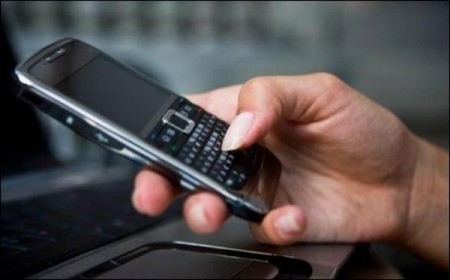If you’re planning to ditch your current cell phone plan, here are some things to do first.
Kevin Van Dyk is perfectly willing to talk about why he is counting the days until he can ditch his cellphone service provider, AT&T, in March 2011. But you might not be able to get a hold of him.
“My phone only works half the time in my house,” says Van Dyk, a Spring Hill, Fla. resident. He isn’t sure if any of the other providers can do better — spotty service is a problem in and around the small town, too. But with rampant billing errors and poor service from AT&T, he says, they can’t do much worse.
Bad connections, dropped calls and other service quality problems are driving consumers like Van Dyk to switch carriers. In a recent study, J.D. Power & Associates notes that consumers planning to switch reported problems four times as often as those without plans to switch. And a growing number fall into the former camp: The rate of dropped calls reported is up 33% compared with six months ago.
There are ways to try before you buy — to test call quality before you’re locked in with a service provider. But it’s a labor-intensive process. And if you’re not willing to wait out your current contract, it’s also an expensive one, with early termination fees of up to $350.
The best way to find out if a new phone will work where you do is to get one and try it. Carriers will let you out of a new contract penalty-free within the first 14 to 30 days. You’ll most likely want to port your number over, but be aware of the timing: if your existing contract isn’t up yet, that will trigger an early termination fee. Use the trial period to test your phone at home, in the office and other places you frequent.
It may sound obvious, but a surprising number of people buy a new phone before going on vacation or some other shift in their usual schedule, says Kent German, a senior editor covering cell phones for CNET. Not enough bars? You’ll owe only for plan charges during that trial period, whatever plan you sign up for. Of course, then you’ll have to go through the process of porting your number and trying again with another carrier.
If you’re not up for the hassle — or you want to research options before your contract is up — there are applications such as CNET’s cell coverage maps and BillShrink’s plan comparison tool out there to estimate signal strength down to the zip code. Those applications and carrier call quality ratings aren’t foolproof, says Kirk Parsons, the senior director of wireless services at J.D. Power & Associates, because reception can vary by block. This, of course, is all subjective. People on a network with wide reports of problems are more likely to notice those misconnections, he says, “and some carriers do a better job of managing customers’ perceptions than others.”
Or you can source the crowd. Before Tariq Ahmad moved to Greeley, Colo., to attend grad school earlier this year, he visited the major carriers’ cell phone stores in the town and talked to people on the street about the quality of the service. Alternatively, have a party. Inviting other people over to check out how many bars their phones get in your home or apartment is a fast and friendly way to research other carriers. At work, poll cube-mates for similar results.
Views: 399



